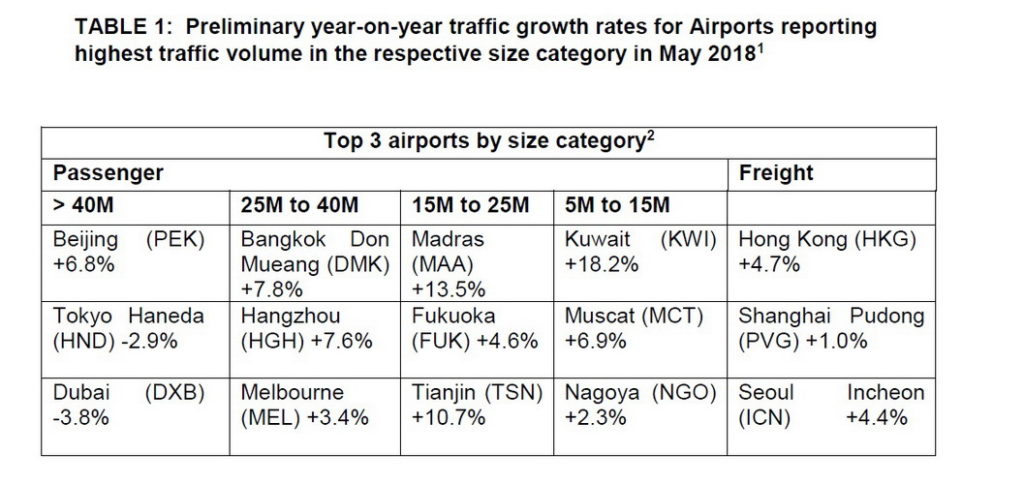 Passenger growth in the Middle East has experienced a decline of -4.5% according to a report from the Airports Council International Asian office.
Passenger growth in the Middle East has experienced a decline of -4.5% according to a report from the Airports Council International Asian office.
The report reveals that, this year the earlier appearance of Ramadan in the calendar which ran from May 16 to June 14 – in 2017 the observance was May 26 to June 24 – is thought to have led to a dip in the passengers through the regions three main airports: Dubai (DXB) -3.8%, Doha (DOH) -23.6% and Abu Dhabi (AUH) -12.9%.

China
Passenger traffic growth in China leveled out +8.2% for the month maintained by strong domestic demand at +7.11%. Out of the top 10 airports in Asia-Pacific that generated the highest domestic passenger volume increase from last year, six airports came from China and the top three were: Beijing (PEK) +6.8%, Shenzhen (SZX) +10.8%, and Nanchang (KHN) +46.2%.
India
Another key aspect of the report was that despite reporting growth of +13.3%, India’s domestic flight sector is not developing as rapidly as expected with the marker delivering the lowest rate of growth since recording +15.5% in November last year. Top volume drivers for the month were: Bangalore (BLR) +25.5%, Delhi (DEL) +8.6%, and Hyderabad (HYD) +27.3%.
Freight
For air freight, APAC hubs maintained solid growth at +4.7% while the Middle East experienced a small decline of -0.9%. Hong Kong continued to be the top freight hub delivering growth at +4.7% followed by Shanghai Pudong (PVG) +1.0% and Seoul Incheon (ICN) +4.4%.
ACI Asia-Pacific is based in Hong Kong and represents 106 members operating 605 airports in 49 countries/ territories in Asia-Pacific and the Middle-East.



 share
share








































